Affiliate links on Android Authority may earn us a commission. Learn more.
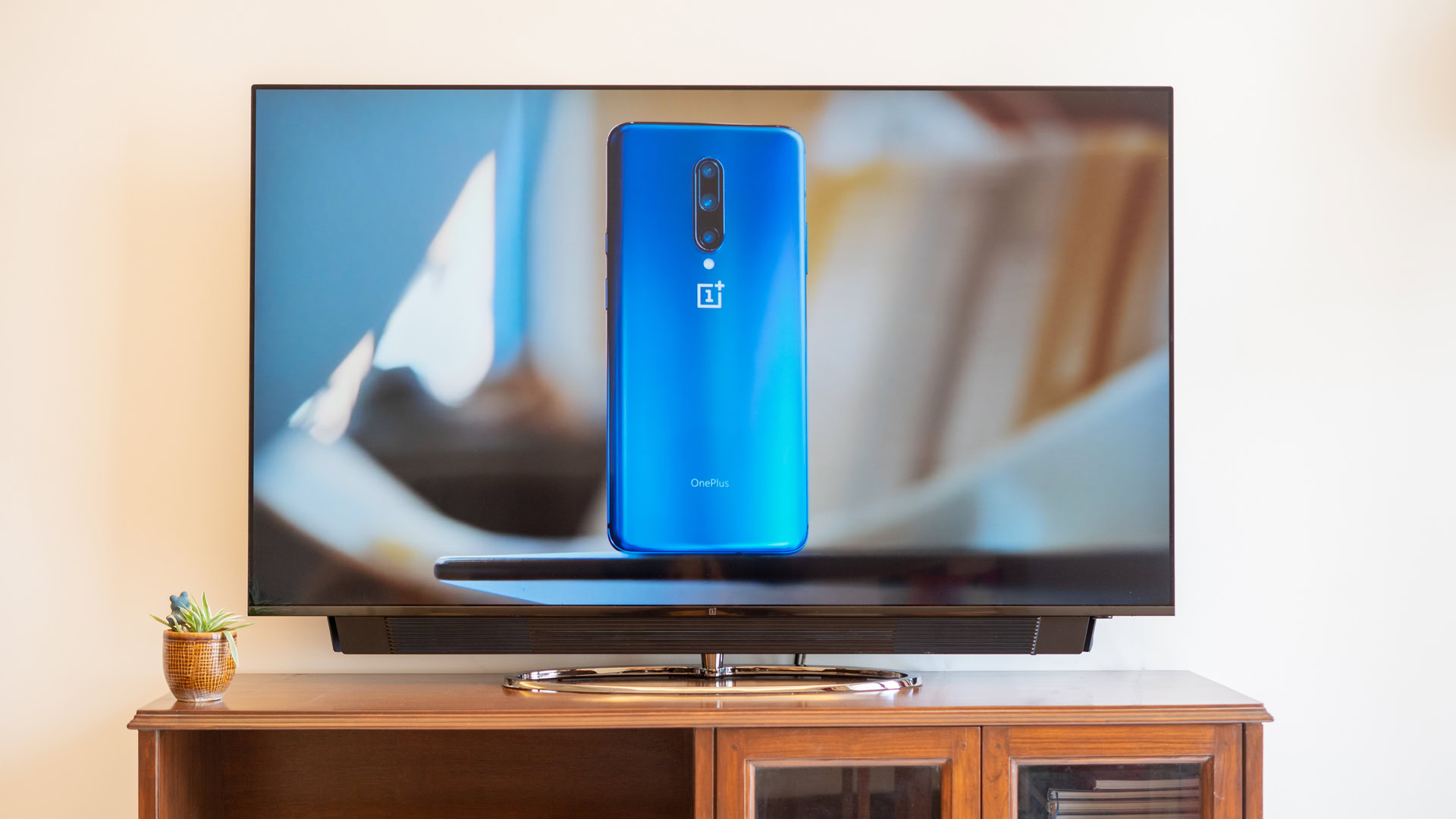
OnePlus OnePlus TV 55 Q1 Pro
What we like
What we don't like
OnePlus OnePlus TV 55 Q1 Pro

Update, February 6, 2019 (6:20AM ET): Netflix has released an all-new remote for the OnePlus TV. Hot on the heels of a software update that brings Netflix support, the new remote has revamped button layout as well as a dedicated button for Netflix. Existing OnePlus TV users get the new remote for free via an invitation code.
OnePlus not only invented the flagship-killer category for smartphones, but has almost perfected the art of creating phones that offer tremendous value. So when OnePlus decides to get into an all-new product category, you sit up and take notice.
Headphones and accessories might have been experiments for the company, but now OnePlus is betting big with the OnePlus TV. There are two models: one with a slide-out soundbar and one without. The first two versions are aiming for the popular 55-inch size, with larger models to follow.
For a company that has traditionally avoided building a services-based business model, the launch of OnePlus TV represents a big change in pace. Does it succeed or is the OnePlus TV 55 Q1 Pro dead in the water? Find out in Android Authority’s OnePlus TV review.
OnePlus TV review: The big picture
Televisions are expensive products with long replacement cycles. Traditionally, it’s not the kind of business that would appeal to a smartphone maker whose users tend to upgrade within two years or so. While traditional television brands focus on hardware and brand appeal, the likes of OnePlus and Xiaomi have cut their teeth on limited margins, and on providing a world-class experience at affordable prices.
Like Xiaomi with its Patchwall integration, the OnePlus TV marks the company’s entry into digital content aggregation. The idea is pretty simple. A wall of content supplied by partners, bolstered by clever filtering and recommendations, makes it easy for customers to figure out what to watch next. By driving viewers to partner platforms, the interface essentially becomes an advertising space for content creators and can also drive affiliate revenue, thereby guaranteeing OnePlus a way to make money over the long term.
OnePlus 55 Q1 vs OnePlus 55 Q1 Pro: What’s different?
Both televisions have the same 55-inch 4K display panel. Differences lie in the audio setup and design. To start, instead of the eight-speaker array of the OnePlus 55 Q1 Pro, you get just four speakers on the standard model. Total output remains 50W, but you miss out on dedicated woofers.
Similarly, the OnePlus 55 Q1 does not have the slide-out speaker bar. In fact, there is no visible speaker bar at all. Instead, it offers a more traditional set up with the speakers integrated within the display itself.
OnePlus TV review: Design
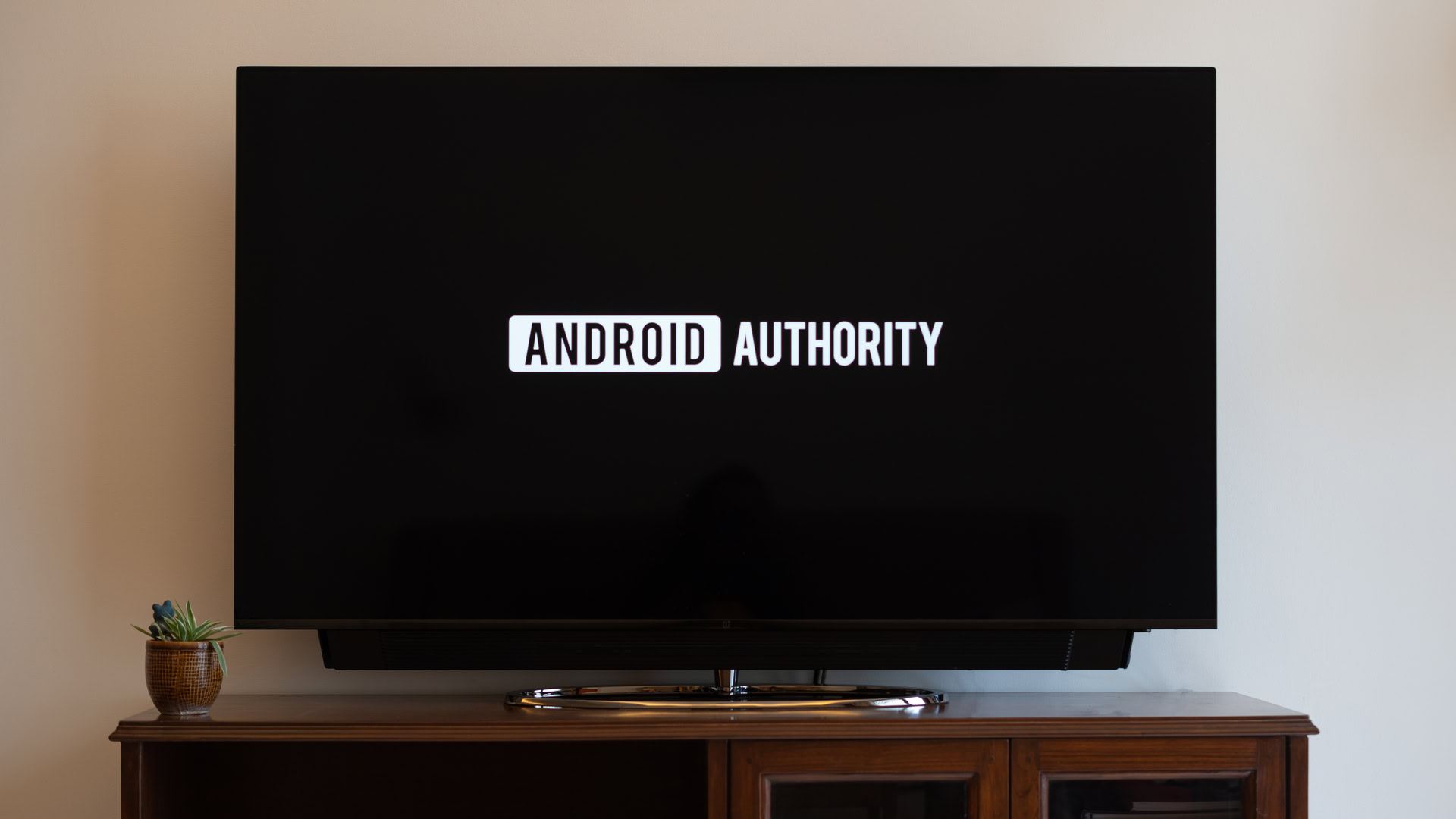
A large-screen television is, more often than not, the center of attention in your living room. As such, design is an integral part of delivering a premium large screen experience. Outside of Sony’s acoustic surface technology that uses the display as a speaker, however, most attempts at TV design differentiation have been rather lackluster.
As it stands, the key design difference here is built around a gimmick. Switching on the television presents a light show, along with an almost theatrical slide-down of the attached soundbar. The Horizon Light, as OnePlus calls it, is supposed to draw inspiration from the edge notification effect on OnePlus smartphones.
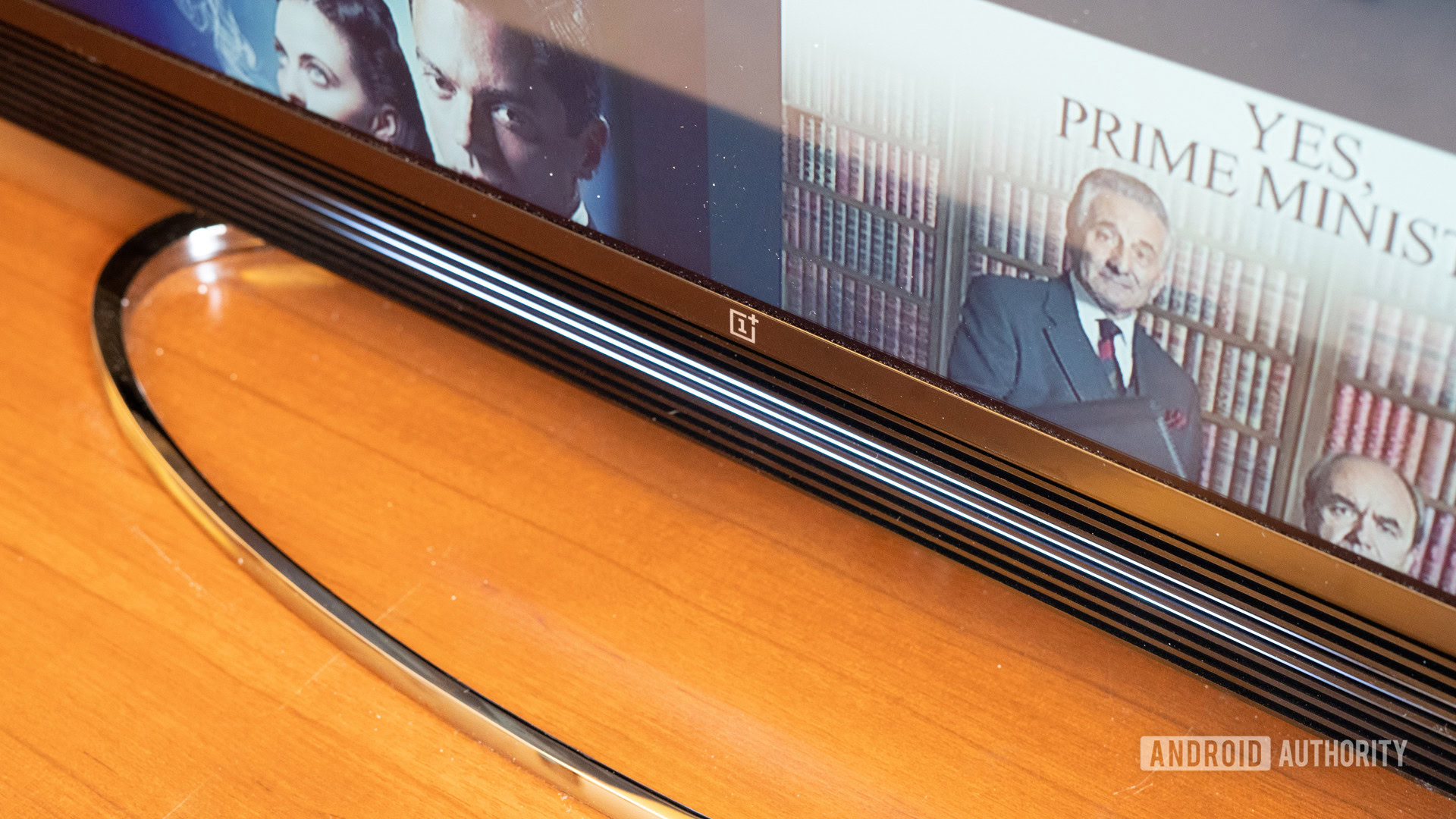
It’s not a bad look, but the theatrics of the slide-down mechanism come across as over-engineering for the sake of it. Personally, I found the television a bit more appealing to look at with the soundbar out. It is a cinch to switch off the sliding mechanism in the settings pane.
While the display panel itself is minimalist, with small bezels and little else to talk about, the soundbar sports slatted grilles, giving it an almost retro, 70s throwback look. Towards the rear, the speaker is rounded off with a mesh fabric.
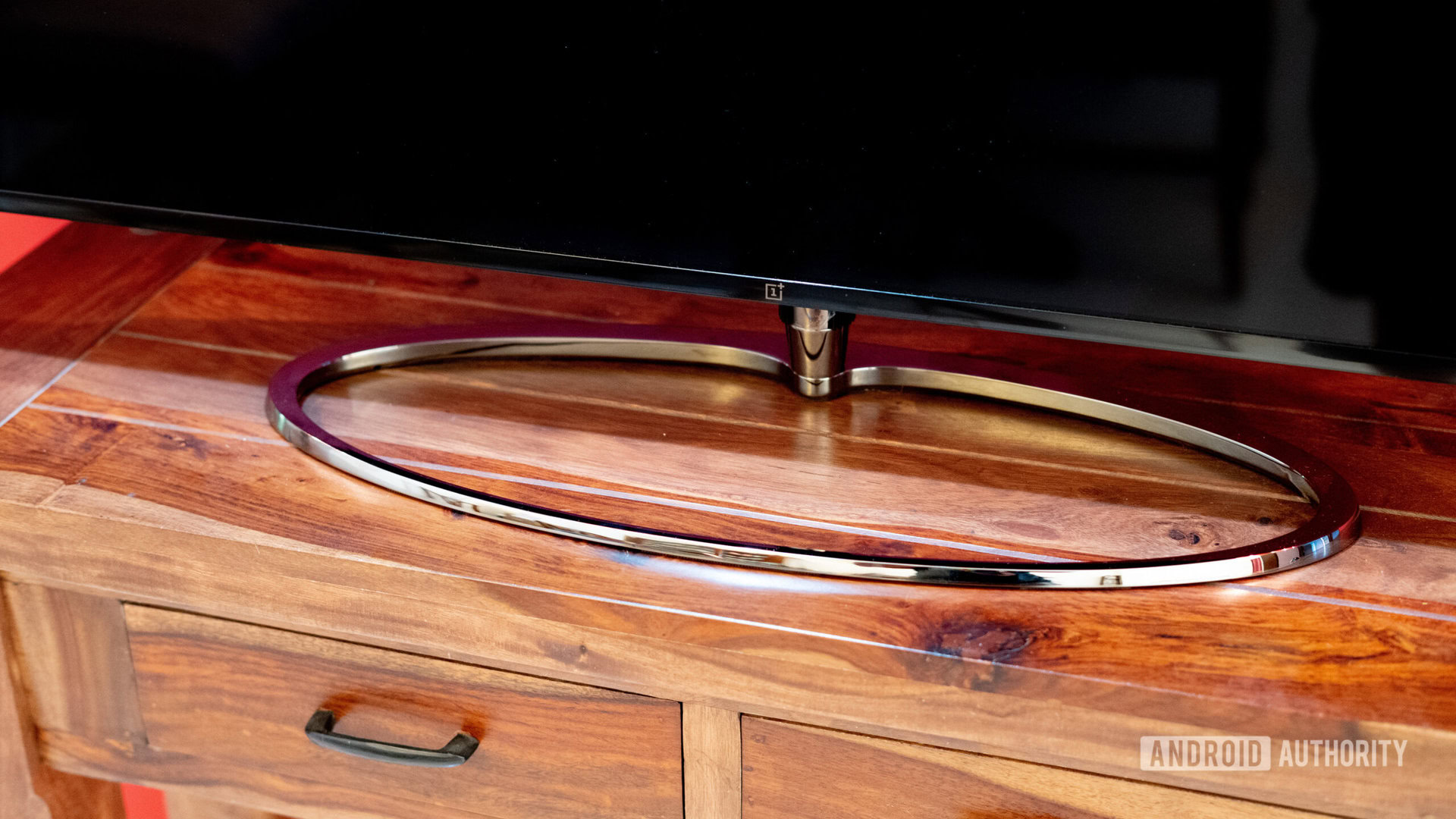
The retro theme continues with the high-gloss, chromed-out stand. I don’t particularly care for the shiny chrome look, but design is a very personal choice and your mileage with it may vary. For a company that has always delivered cutting-edge, futuristic-looking hardware, OnePlus really seems to be digging deep into the past for design inspiration with its first television.
The floating panel doesn't feel very secure, and it wobbles even at a slight touch.
According to the company, the dock, or the TV mounting mechanism, is inspired by ancient Greek architecture. I’m all for paying attention to design details, but this one definitely feels like a case of form over function. The floating panel just doesn’t feel very stable, and simply wiping a cleaning cloth on the screen can wobble the whole thing.
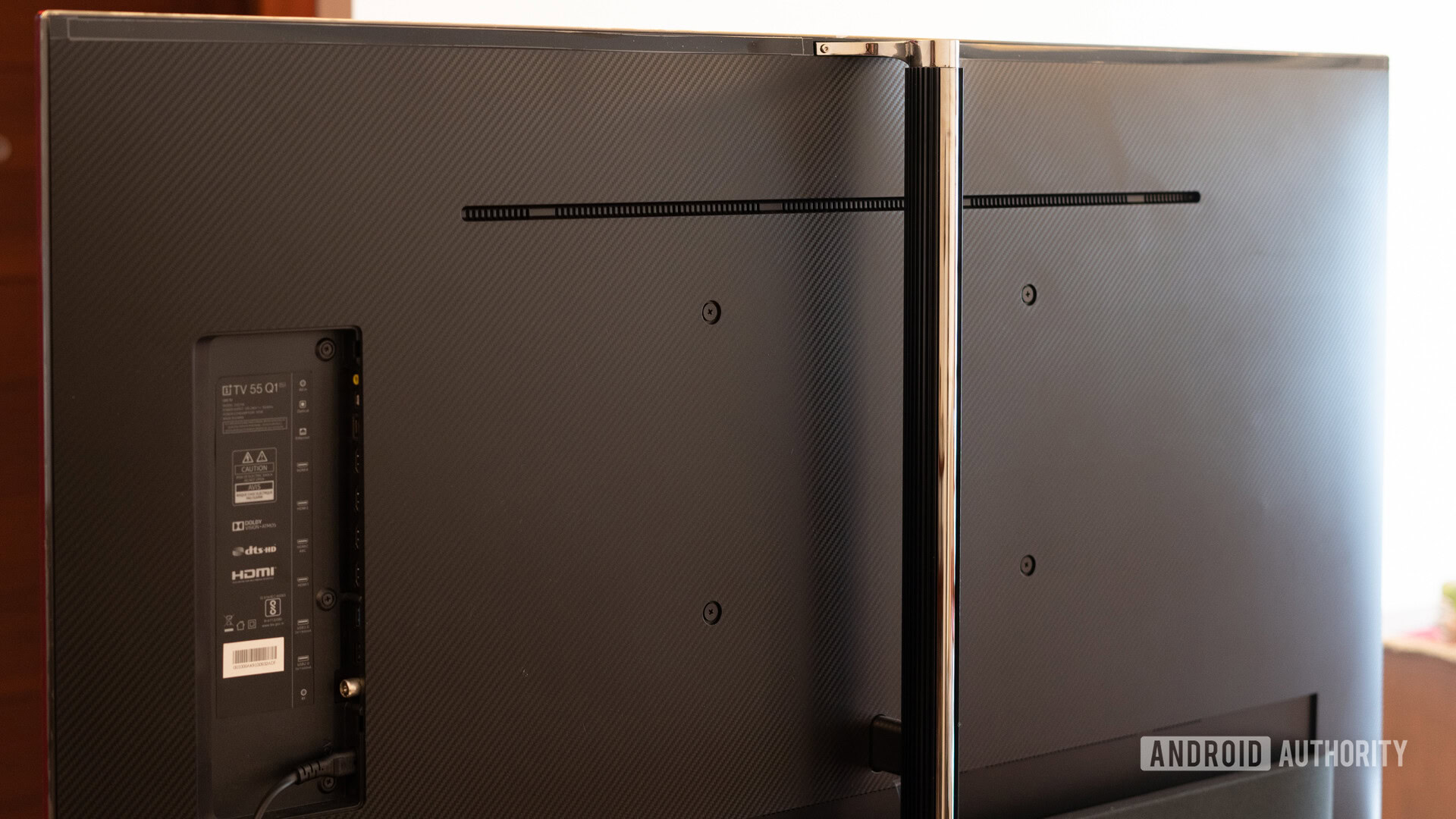
That said, the carbon fiber patterned back looks pretty good, and the cable management solution is one of the better ones I’ve come across. The cutout at the back is placed close enough to the side to be reachable, but I found it hard to remove the panel cover with the TV placed right up next to the wall. If you are planning to wall-mount the OnePlus TV, you might want to invest in pull-out VESA mounts that let you access the ports.
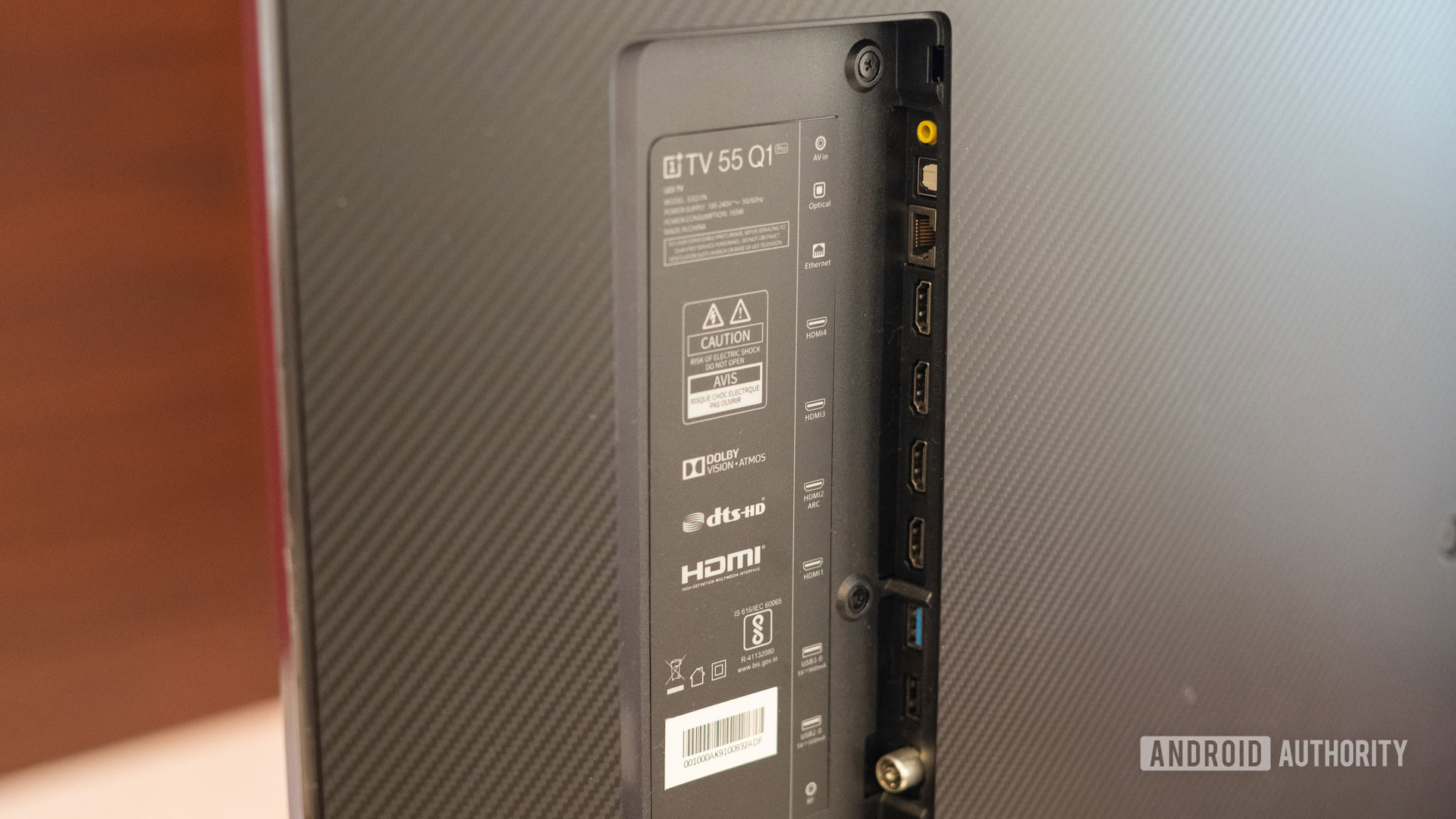
The port selection is plenty good. I counted a total of ten ports at the rear, including four HDMI ports, USB 3.0 and USB 2.0 ports, as well as the standard optical-out, ethernet, and AV-input selection. In case you favor a Fire Stick over Android TV, the stick just about fits inside the cutout, allowing you to retain the clean profile of the TV.
Remote
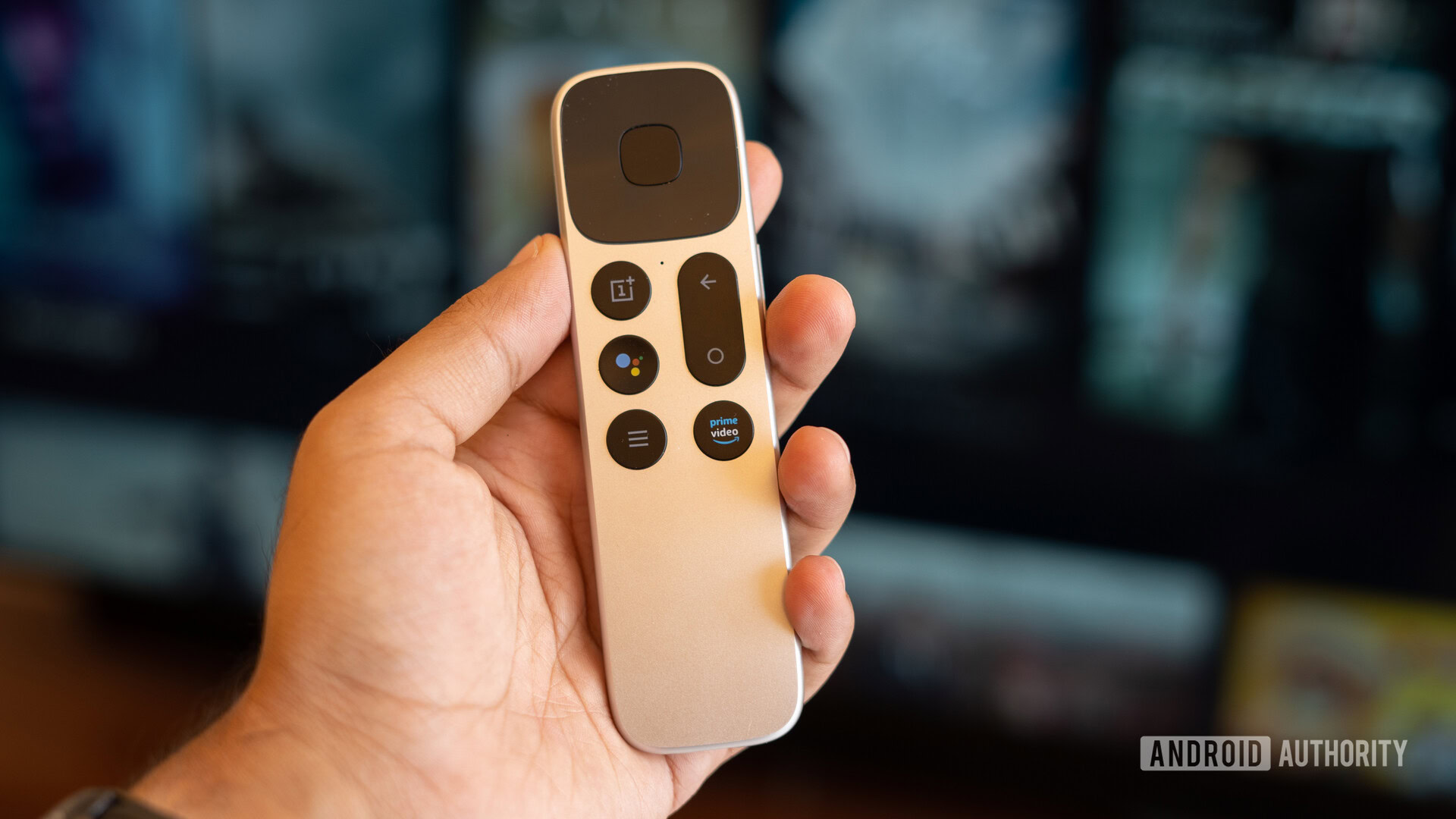
OnePlus has made some curious design choices with the remote control for its TV. I appreciate the aluminum build, USB-C charging, and three months of battery life, but the diminutive build and location of the volume button make no sense at all. A TV remote should be designed to be ergonomic so you can hold it in your hand for extended periods of time.
Also read: OnePlus 7T review: The pro you always wanted
Unfortunately, the remote for the OnePlus TV is slippery and way too tiny, so you will spend more time fishing it out of your sofa’s crevices than actually using it. I didn’t particularly care for the button layout, either. Key controls like back and home and even the volume rocker have been relegated to the sides, with the OxygenPlay launcher taking center stage. Meanwhile, there are no buttons to mute the television or switch it off — long-pressing the OnePlus button does that.
As of December 9, 2019, OnePlus is no longer shipping this remote. The new remote has completely reconfigured button layout, the volume keys are no longer placed on the sides. Additionally, there are dedicated buttons for Netflix and YouTube.
OnePlus TV display quality
- 4K resolution
- VA QLED panel
- 120% NTSC coverage
- 96% DCI-P3 coverage
Let’s cut through the jargon. The OnePlus TV has a 4K QLED panel that looks plenty good. There are a couple of things to note here. The OnePlus Q1 Pro uses a QLED panel that is closer to an LED display than it is to an OLED panel. It’s a transmissive form of technology that shines an LED-based backlight through a quantum-dot film and then an LCD to form the final image output. These quantum dots are the secret for delivering punchier color and a brighter image.
The panel used here is of the VA variety, which brings a better contrast-ratio and a reasonably fast refresh rate. Unfortunately, it does not have the viewing angles of IPS panels, but I didn’t notice major issues in my time with the television.
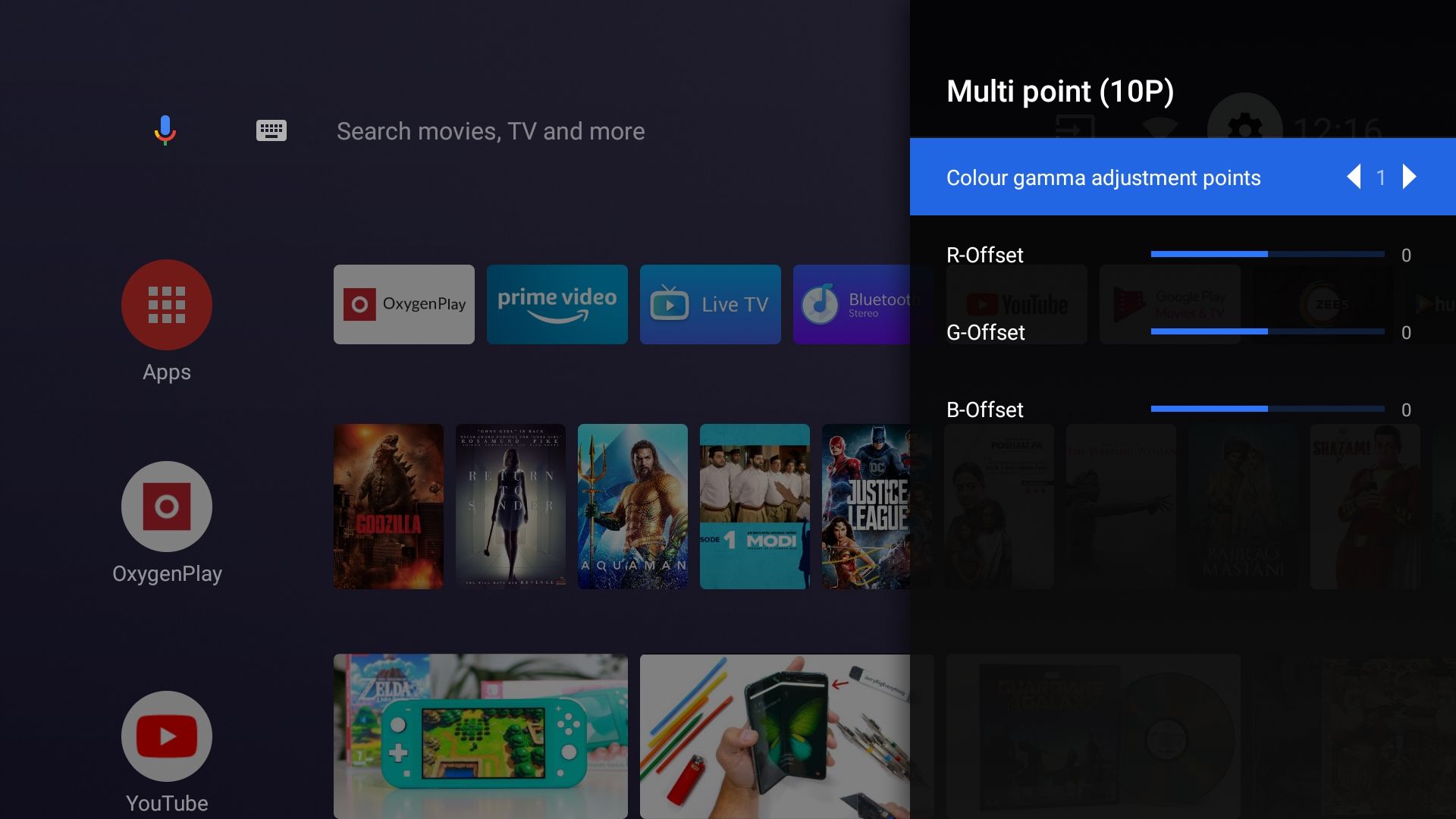
The OnePlus Q1 Pro looks plenty good, and I measured brightness levels of about 470 nits in the standard picture profile. I had no issues at all with viewing content even in a sunlit room. The panel is, of course, capable of going much brighter when displaying HDR content. Dolby Vision support is baked in as well, and a notification turns up on the corner when watching compatible content like “Jack Ryan” on Amazon Prime Video. While Netflix isn’t supported just yet, its library of Dolby Vision content is a lot more robust, and should be compatible with the TV when the app is added later in the year.
OnePlus included a range of tunings, including a cinema profile that tones down contrast and gives the picture a more true-to-life look.
If you’ve got the right equipment on hand, the television makes it easy to calibrate by exposing the RGB bias and allowing you to make granular changes. Advanced settings allow you to make further adjustments. For the sake of this OnePlus Q1 Pro review, we stuck to the standard out-of-the-box profile.
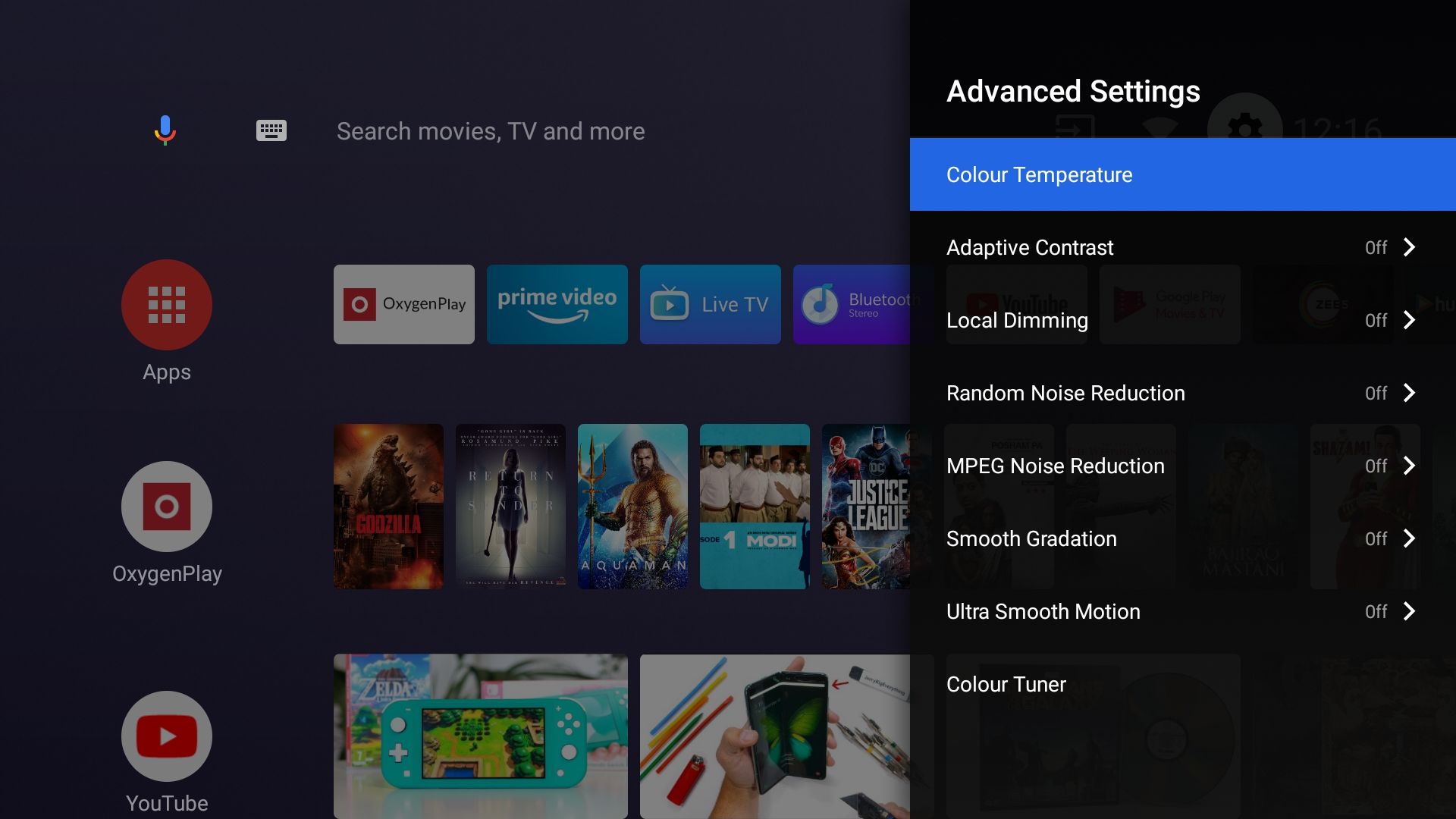
OnePlus talked up a number of enhancements it made to further boost image quality. This includes a “Gamma Color Magic” processor that is supposed to increase saturation and image quality by analyzing on-screen content. Another enhancement is MEMC-based frame interpolation. However, this adds an immediate soap opera effect to content, and the only place where you might find this useful would be while watching sports. Similarly, adaptive contrast boosts brightness and improves detail in shadow areas, at the cost of increased noise in the video.
For what it’s worth, I found that image quality was best with all these extra options switched off. As it turns out, the TV ships with all these features off by default.
Audio
Part of what sets the OnePlus TV apart is the built-in soundbar. Packing eight speakers at a cumulative 50W, the audio quality is noticeably better than standard television speakers. That’s not to say that it will replace a dedicated 2.1 sound system — the lows lack the visceral bass thump that only a subwoofer provides. The speakers are split across the frequency range: dual woofers handle the low end, four speakers handle the mid-range, while two more serve as tweeters.
Having a dedicated soundbar has an immediate positive effect on sound quality.
Vocals come through beautifully clear, with an emphasis on clarity and highs. Cross the 40-45% volume mark and you will start noticing an obvious skew towards treble. Sound can very quickly become too shrill to be enjoyable.
I’m usually not a fan of software-based Atmos enhancements. You simply can’t emulate the sound output of a surround setup with dedicated speakers for eight channels. While that is obviously true here as well, I noticed the surround-sound mode under the Atmos settings added a lot more stereo separation and made the audio just a bit more crisp and airy.
Don’t miss: The best soundbars you can buy
Software experience
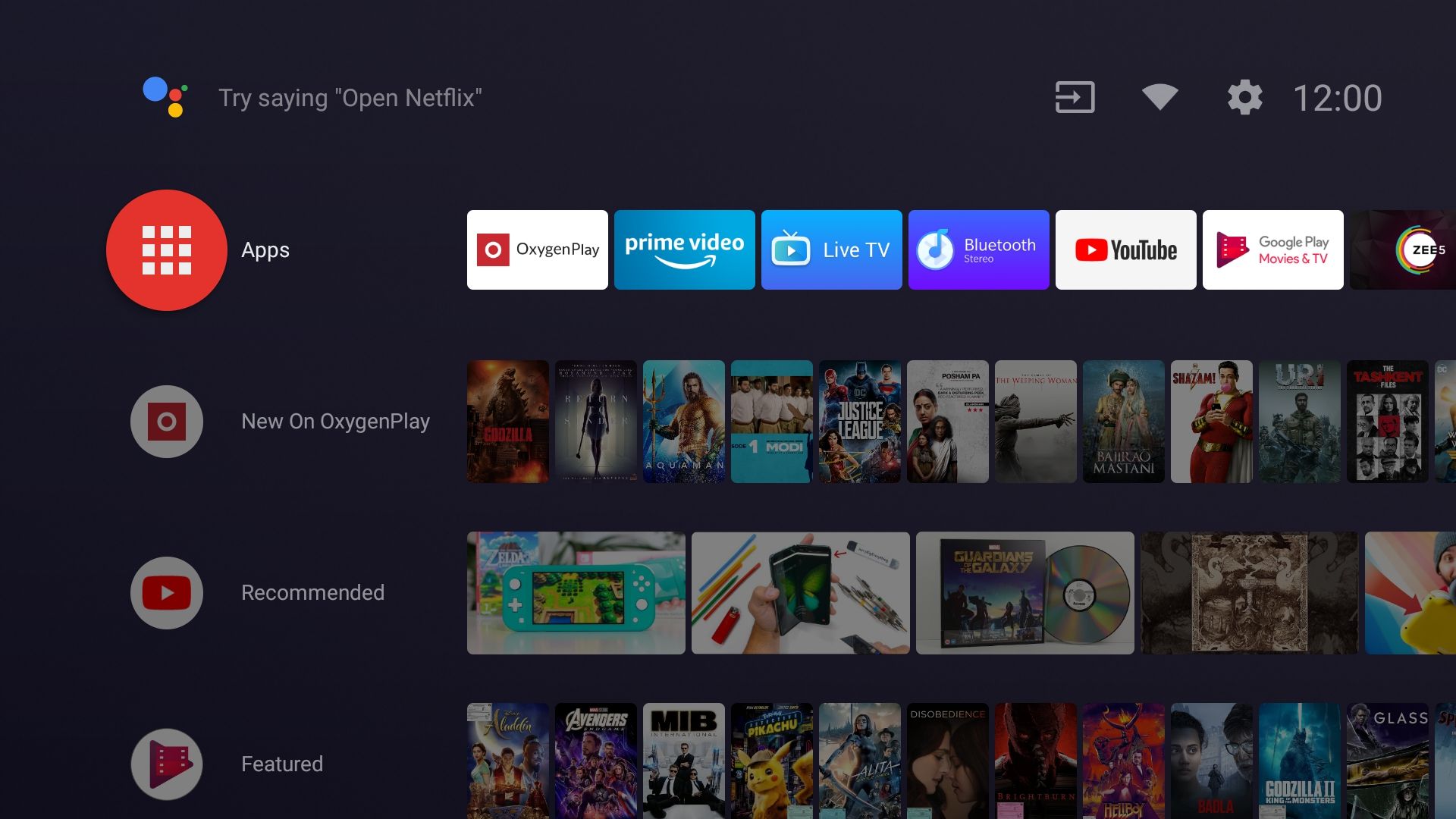
The software experience on the OnePlus Q1 Pro TV can be divided into two distinct sections. The underlying base here is Android TV. Google doesn’t allow too much OEM intervention and I’m absolutely glad for it. Instead of shoehorning launchers like OxygenPlay and Patchwall, OnePlus presents them as alternate options accessible via the remote or the app drawer.
There’s not much overhead in terms of pre-installed apps. These are restricted to a photo gallery, a file browser, a weather app, and a few content services. The standard Android TV interface works as you’d expect, providing a recommendations feed from sources like YouTube, Google Play Movies, and other supported apps.
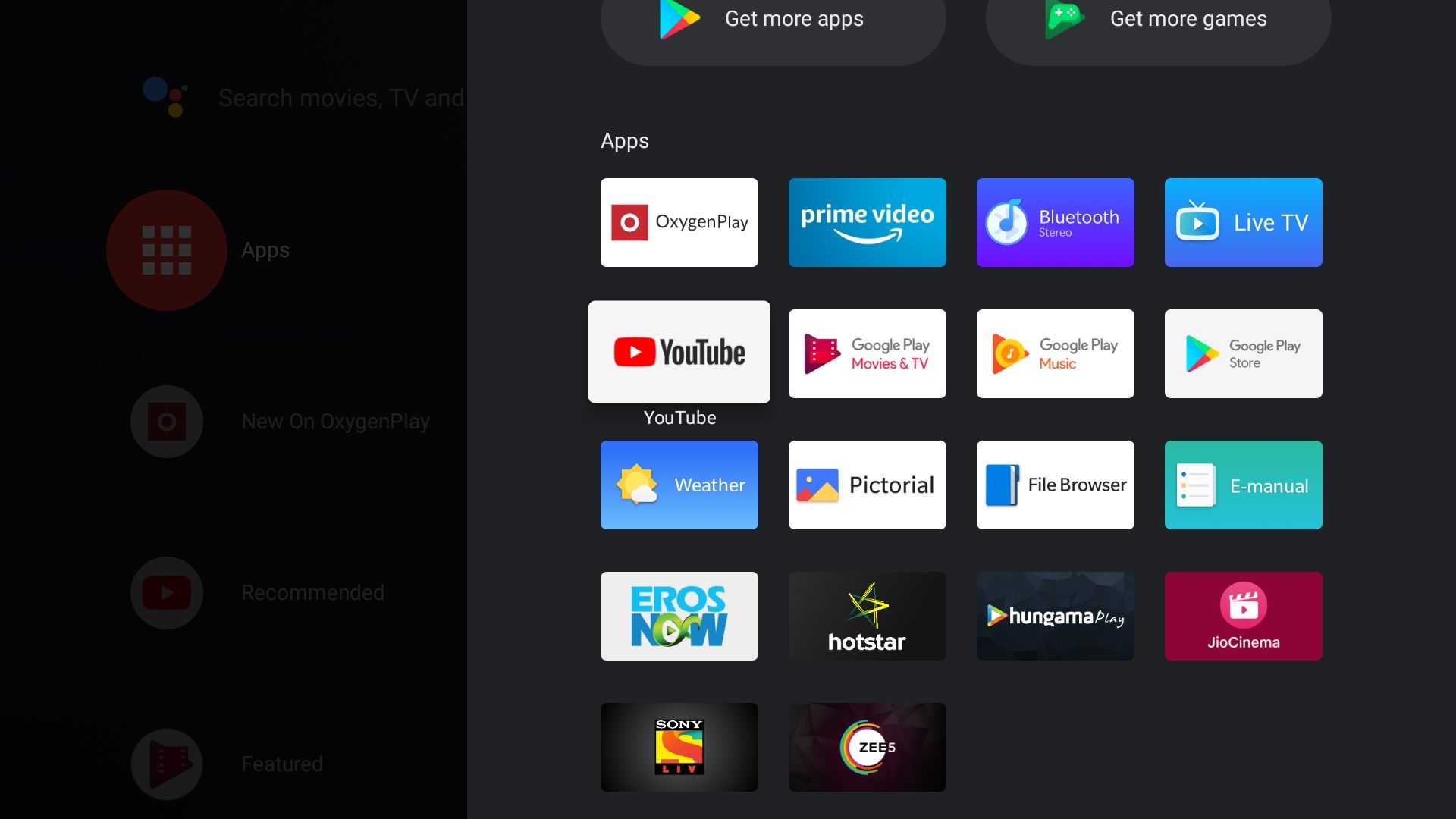
The OxygenPlay interface is where OnePlus is trying to differentiate itself. Just like Patchwall on Xiaomi’s hardware, content is separated into primary categories like movies and shows, with further sub-categories to help you find relevant recommendations.
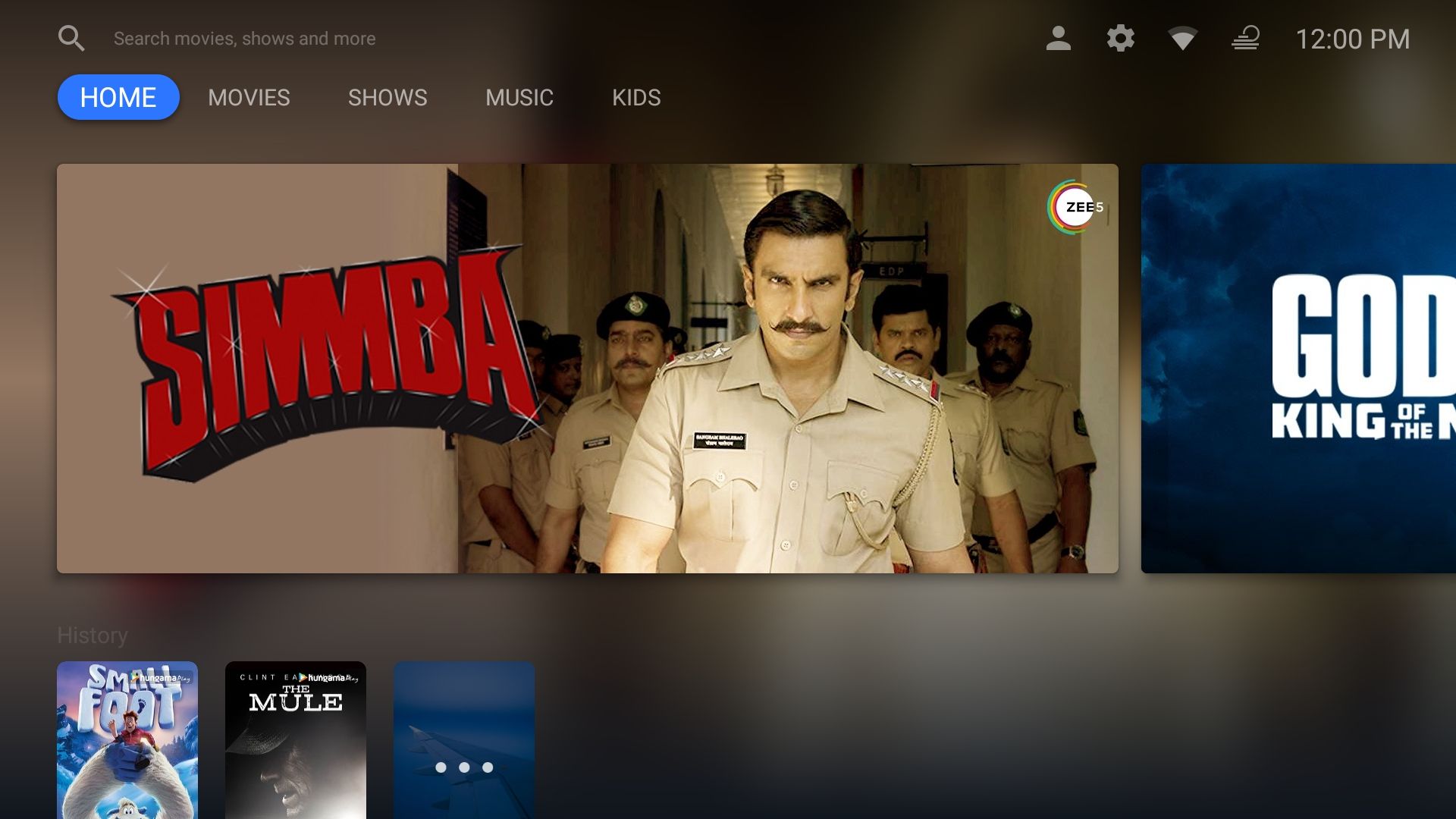
The interface is well laid out, albeit a bit barebones at the moment. Content partners are limited to Eros, Hungama, and Zee5, compared to about 18 options on Patchwall. I found the interface to be fluid and the content that’s available loads quickly. Streaming quality will, of course, depend on the provider’s feed. Amazon Prime Video is available as a dedicated app, but it does not integrate with the OxygenPlay interface. While Netflix was not supported at launch, OnePlus has patched it in as a software update since.

There are other bits of software thrown in for good measure. If you really want to view the local weather on a 55-inch display, it’s available as a dedicated app, though the direct access shortcut within OxygenPlay might be a bit much.
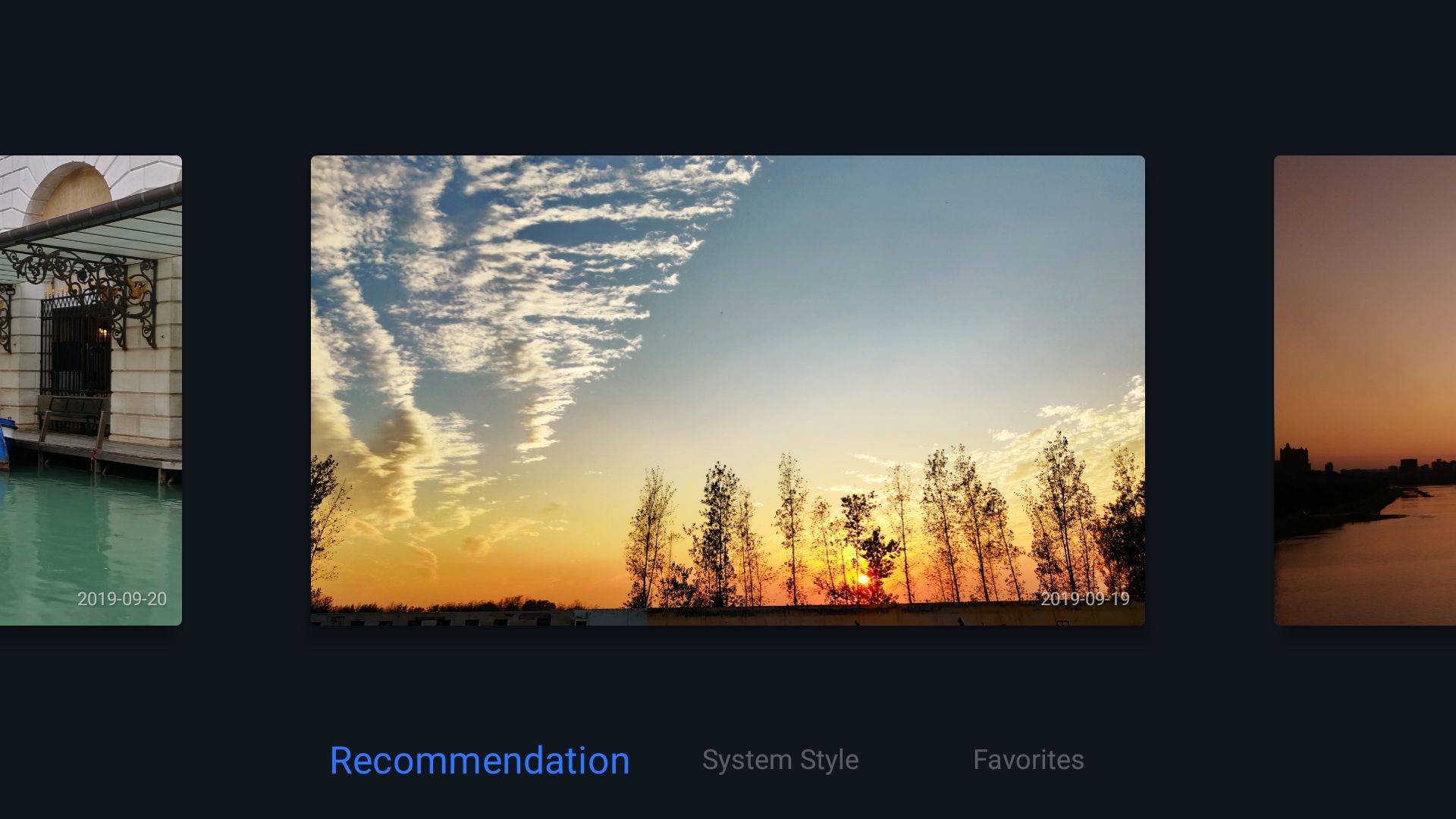
OnePlus will let you customize the standby screensaver as well. The ability to switch the font to the OnePlus Roboto font is a cool feature I haven’t seen on any other Android TV. It’s not much, but I like the attention to detail and the focus on maintaining continuity across brand hardware.
As of February 2020, OnePlus has delivered software updates that add a range of new content integrations. This includes Alt Balaji, MX Player, Boot, ShemarooMe as well as Spotify, JioSaavn. Other nifty additions include support for embedded and external subtitles in the local media player.
OnePlus Connect
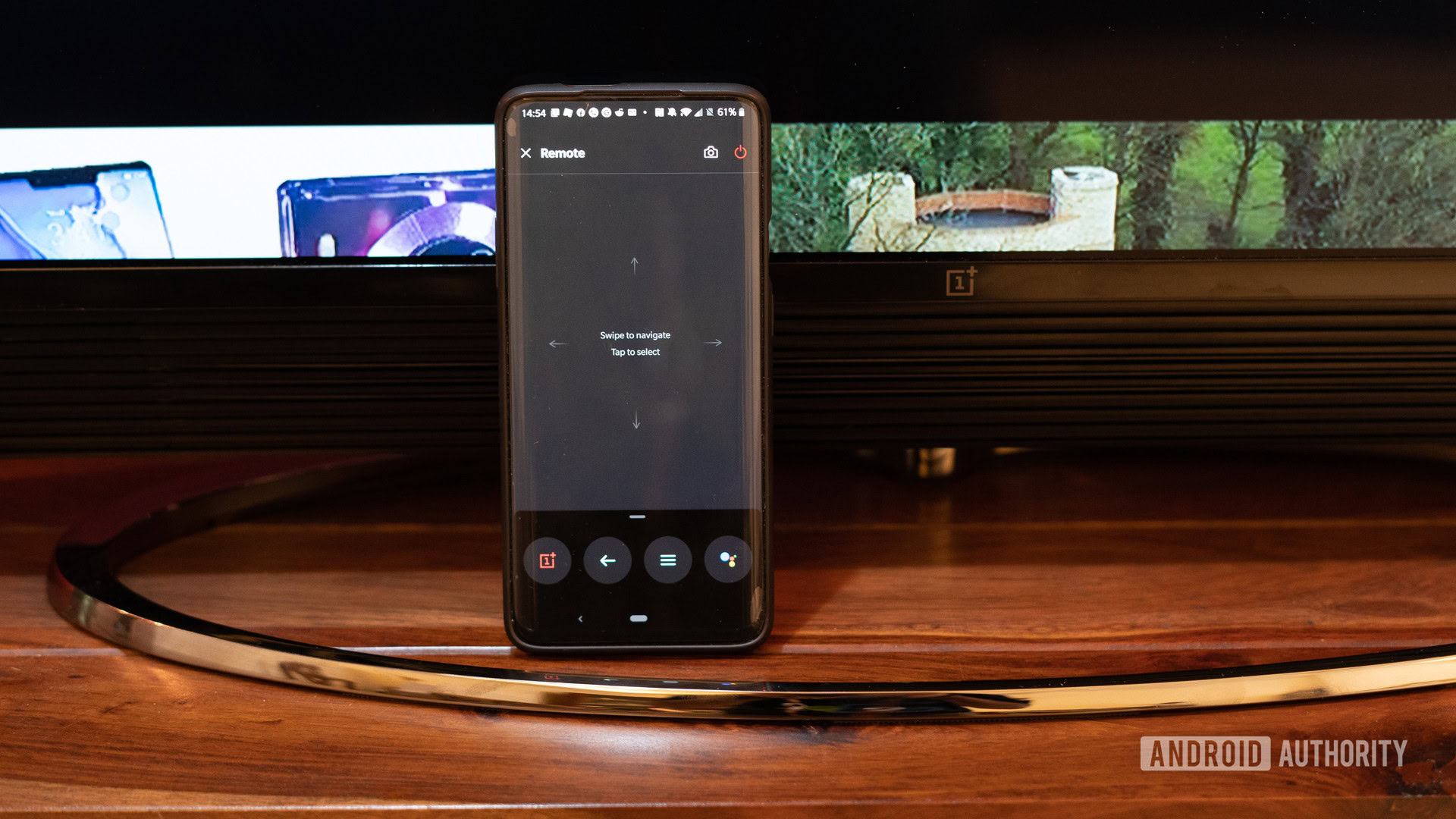
The final part of the equation is OnePlus Connect. This Android app is essentially a remote control for the TV, with a few more goodies. I refuse to believe that swiping on the phone screen is an enjoyable way to navigate your television’s interface. But if you end up losing the remote, the app is available as an option. OnePlus Connect also lets you grab screenshots from your screen. It’s a pretty nice touch and since the screenshots are beamed over straight to your phone, the integration works really well.
The app’s feature set includes the ability to type on your phone instead of having to scroll around the TV interface. You can also beam over streaming content from your phone, though the selection seemed to be restricted to a curated carousel of videos. A toggle to enable screen mirroring is available, but this works just like on any other phone, complete with the inherent latency. Outside of turn-based games, this is not a viable solution if you were planning to toss up your next PUBG session on to the big screen.
Finally, the app lets you play video content from your phone on the big screen, as well as turn down the volume when paired with a OnePlus phone. This functionality was completely broken on our software build, though OnePlus assured us that the television will receive a hefty software update on release.
Following a software update the OnePlus Connect app can be used to share your phone’s hotspot with the television seamlessly.
Value
- OnePlus TV 55 Q1 – Rs. 69,900 (~$970)
- OnePlus TV 55 Q1 Pro – Rs. 99,900 (~$1,400)
This is where things get interesting. While almost all new brands entering into the TV space are aiming at offering value, OnePlus seems to be placing its bets on quality. The television is priced well beyond Xiaomi’s offerings.
To be fair, the hardware is a definite step up over what TCL, Xiaomi, and similar brands offer. But in a market where traditional brands like Samsung, Sony, and LG have built a loyal following through a focus on solid image quality, reliable support, and a service network, OnePlus faces an uphill battle.
To put things in perspective, Xiaomi’s televisions offer a 65-inch 4K panel, with a similar software stack, at a significantly lower price. For a brand that has built up its reputation on affordable flagships, OnePlus is going to face a tough time convincing buyers to fork out that extra bit of money for its TVs.
Additionally, Samsung has dropped priced for its QLED range of televisions, including the very attractive Frame television. At its current pricing, the OnePlus TV, especially the Pro model, just doesn’t offer the kind of value most users are looking.
The company is known for its fantastic price to performance ratio, and while the OnePlus TV 55 Q1 Pro offers a fair amount of performance, it is far from the only one in the segment offering that kind of value.
Since the launch of the OnePlus TV, the company has issued a few updates bringing new content partnerships. OnePlus has also promised three years of software updates which is nice to have. However, it is still too expensive for a television of its caliber.
There are a multitude of affordable 4K televisions from Xiaomi, Vu and similar brands that put a lot of pressure on OnePlus. Biggies like Samsung are also offering options and deals on existing models that make them even more enticing. All said and done, the OnePlus TV offers nothing out of the ordinary for the price it commands, and unless we see a significant price reduction, I don’t see the television gaining much traction at all.
OnePlus TV review: The verdict
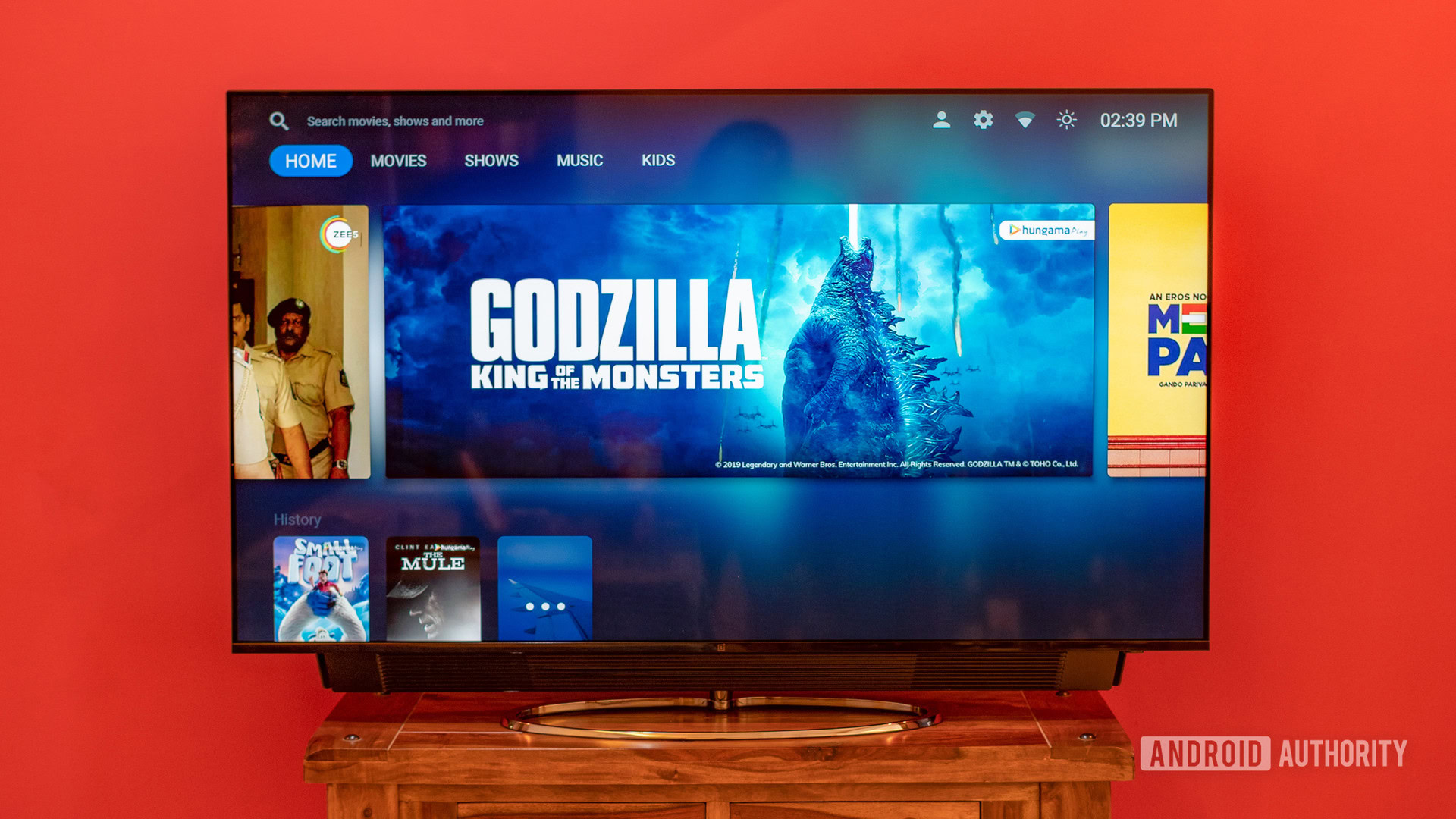
The OnePlus TV 55 Q1 Pro is a bold statement of intent from OnePlus. After establishing itself as one of the dominant players in the premium smartphone segment, the Q1 Pro series brings many of the same virtues to a whole new product category.
The television falls short of perfection, but manages to deliver a more than competent display panel and the integrated soundbar on the OnePlus TV 55 Q1 Pro that delivers audio surpassing most entry-level soundbars. Simply put, that’s a lot of value for smart TV buyers. The approach towards software is interesting and pretty well done, even though we’ve seen more of the same in Xiaomi’s Patchwall-based televisions.
However, the pricing of the TVs puts it right in line with established traditional television vendors. Unlike OnePlus’ phones, the TV is not an affordable alternative to high-end options. With Samsung responding to the challenge, and other vendors offering just as good or even better panels at similar price points, I remain skeptical of how the market will react to the OnePlus TV.
That’s it for our OnePlus TV review. Thoughts? Are you planning on buying one? Let us know in the comments.